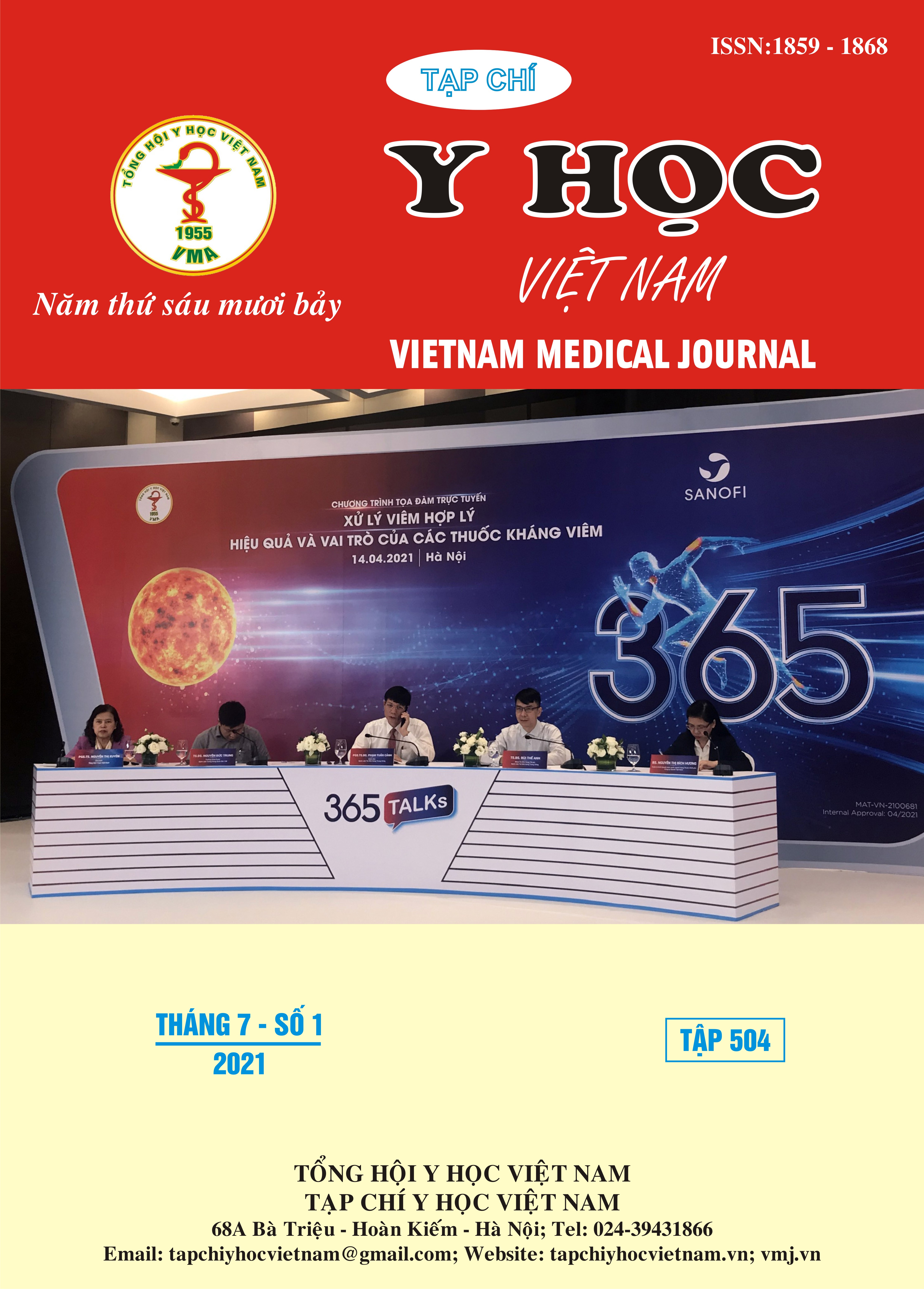TO EVALUATE RESULTS AFTER COMPLETE REPAIR OF TETRALOGY OF FALLOT UNDER 12 MONTHS OF AGE
Main Article Content
Abstract
Objecctives: To evaluate short-term outcomes after completed surgery for infantile tetralogy of Fallot. Methods: Prospective descriptive study. Results: Evaluation results on 19 male patients and 13 female patients, study subjects under 12 months of age. Assessment of peripheral blood oxygen saturation (SpO2) averaged 79.72 ± 12.28%, the lowest was 46% and the highest was 98%. Of which, 13 cases (40.6%) had SpO2 <80%. Post-operative results, there were 4 mild regurgitation cases of pulmonary valve, 9 moderate regurgitation cases and 10 severe regurgitation cases. Post-operative complications included pneumonia (6 cases), respiratory failure due to tracheal stenosis/slideplasty (1 case) and 2 cases of wound infection. There were 1 case died in the hospital because of heart failure and pneumonia. Conclusions: Performing a right atrial and pulmonary approach with the strategy of preserving the pulmonary valve and extending the minimal annulus is easily and conveniently performed in all patients with tetralogy of Fallot. The surgical results were good, the rate of preservation of the pulmonary valve annulus was quite high, the rate of complications in the recovery period and short-term follow-up after surgery was low and there was 1 case of postoperative death.
Article Details
Keywords
Tetralogys of Fallot, congenital heart disease
References
2.Blalock A, Taussig HB (1945). The surgical treatment of malformation of theheart in which thereis pulmonary stenosis or pulmonary atresia.JAMA; 128:189.
3. Bobae Jeon MD, Dong-Hee Kim MD et al (2020). Surgical treatment of tetralogy of Fallot in symptomatic neonates and young infants.The Journal of Thoracic and Cardiovascular Surgery, Volume 159, Issue 4, April, Pages 1477-1478
4. Loomba R. S., Buelow M. W., Woods R. K. (2017). Complete Repair of Tetralogy of Fallot in the Neonatal Versus Non-neonatal Period: A Meta-analysis. Pediatr Cardiol,38, (5), pp. 893-901
5. Kirklin JW, DuShane JW, Patrick RI, et al (1955). Intracardiac surgery withthe aid of a mechanical pump-oxygenator system (Gibbon type): reportof eight cases. Mayo Clin Proc; 30:201.
6. Seliem MA, Wu YT, Glenwright K. (1995). Relation between age at surgeryand regression of right ventricular hypertrophy in tetralogy of Fallot. Pediatr Cardiol; 16(2):53–55. Vol. 232
7. Knott-Craig CJ, Elkins RC, Lane MM, et al (1998). A 26-year experiencewith surgical management of tetralogy of Fallot: risk analysis formortality or late reintervention. Ann Thorac Surg; 66:506–511
8. Van Der Ven J. P. G., van den Bosch E., Bogers Ajcc, Helbing W. A. (2019). Current outcomes and treatment of tetralogy of Fallot. F1000Res,doi: 10.12688/ f1000research. 17174.1. eCollection 2019


